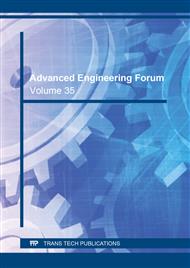p.18
p.29
p.46
p.55
p.69
p.77
p.94
p.102
p.110
Experiment Study of Performance, Combustion Process, and NOX Emission of Diesel Engine with Air-Cooled Angle Globe Valve EGR
Abstract:
IMO ANNEX VI has enacted TIER III since 2016; one of the regulated emissions is NOX. The effective NOX reducing method is by using Exhaust Gas Recirculation (EGR). EGR valve with air-cooled angle globe valve type has been developed in Marine Diesel Laboratory, Department of Marine Engineering, Sepuluh Nopember Institute of Technology (ITS). EGR is in use on the Yanmar TF 85-MHDI diesel engine to study performance of engine, combustion processes, and NOX emitted experimentally. EGR varies from 0, 10, 20, and 30% respectively. To learn the performance of engine speed varied from 1800-2200 rpm. While the combustion process and NOX follow of IMO ANNEX VI. EGR without air cooling (HOT-EGR) is also studied for use as a reference of COLD-EGR achievement. The result of emission examine according to statistical data that modified diesel engine with HOT-EGR and COLD-EGR system are able to be within the threshold of emission test in TIER 2, at EGR valve opening 20% and 30% for load of 25%, 50%, and 75%. While for 100% load at EGR valve opening of 20% and 30%, the emission of diesel engine is capable of entering the TIER 3. In terms of performance the SFOC value can be improved on 10% of COLD-EGR condition with decrease of 14.62%, result for combustion process Peak pressure on the diesel engine becomes low and the heat release decreases.
Info:
Periodical:
Pages:
69-76
Citation:
Online since:
February 2020
Authors:
Price:
Сopyright:
© 2020 Trans Tech Publications Ltd. All Rights Reserved
Share:
Citation:


